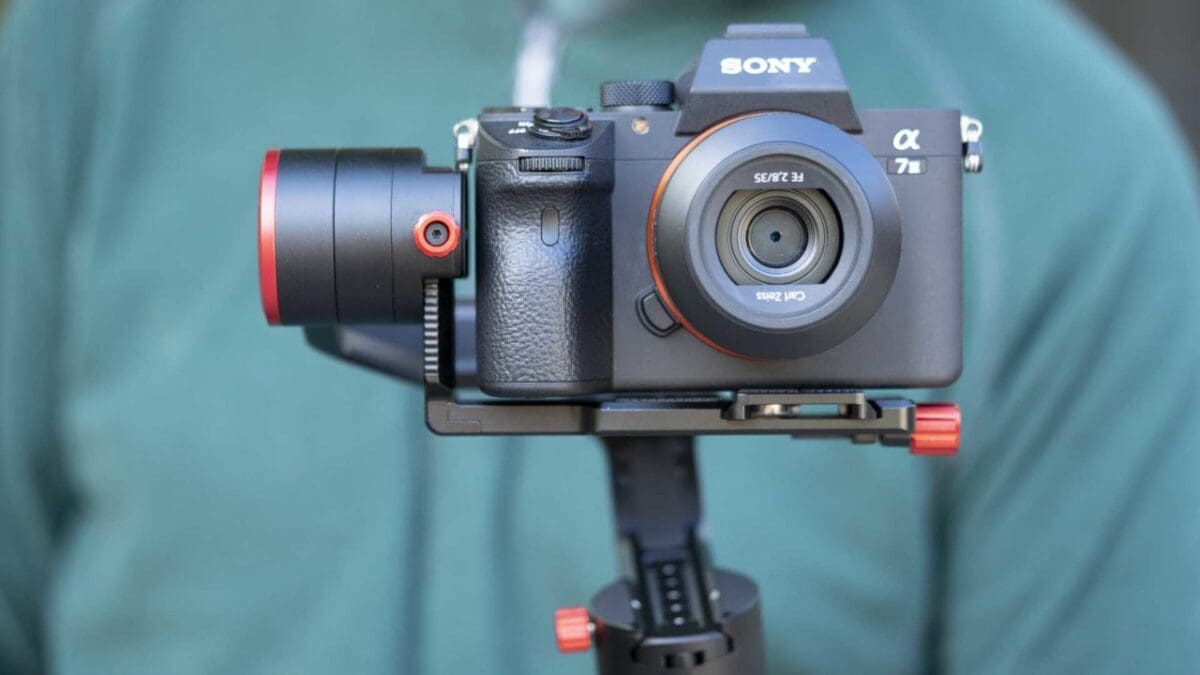Video stabilisation systems used to be big, heavy and expensive. But with DSLRs and mirrorless cameras being used to shoot high-end video, their size, weight and price have come down. At less than £350/$350 the FeiyuTech A1000 3-axis gimbal has caught the eye of many enthusiast videographers. I’ve been putting it through its paces for our review.
Features
The FeiyuTech A1000 is a single-handle/grip motorised gimbal but there’s an optional two-handle kit available.
It’s powered by two batteries that fit inside the handle and it comes supplied with four rechargeable batteries. These can be charged inside gimbal or by using the supplied charger.
A joystick on the handle allows you to control the rotation and tilt of the camera. Cables are also provided to allow some cameras to be connected to the gimbal so the shutter can be fired by a control on the grip.
FeiyuTech also has a smartphone app that you can use to control the A1000.
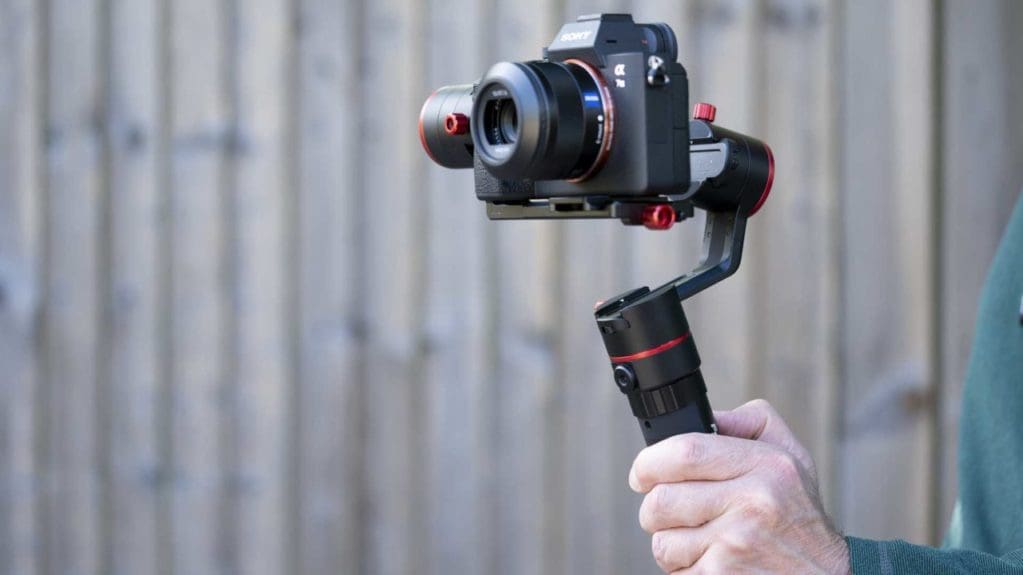
Setting up the FeiyuTech A1000
The first step is to charge the batteries and insert them into the handle. You also need to attach the gimbal section to the handle, it’s a push-fit with a screw-locking cover.
When you’re setting up the FeiyuTech A1000 for the first time, it’s a good idea to attach the provided mini tripod to the bottom of the grip. This screws in easily and allows you to rest the A1000 on a table while you get the balance right.
The next step is to screw the provided quick release plate onto the camera and then slide that onto the gimbal.
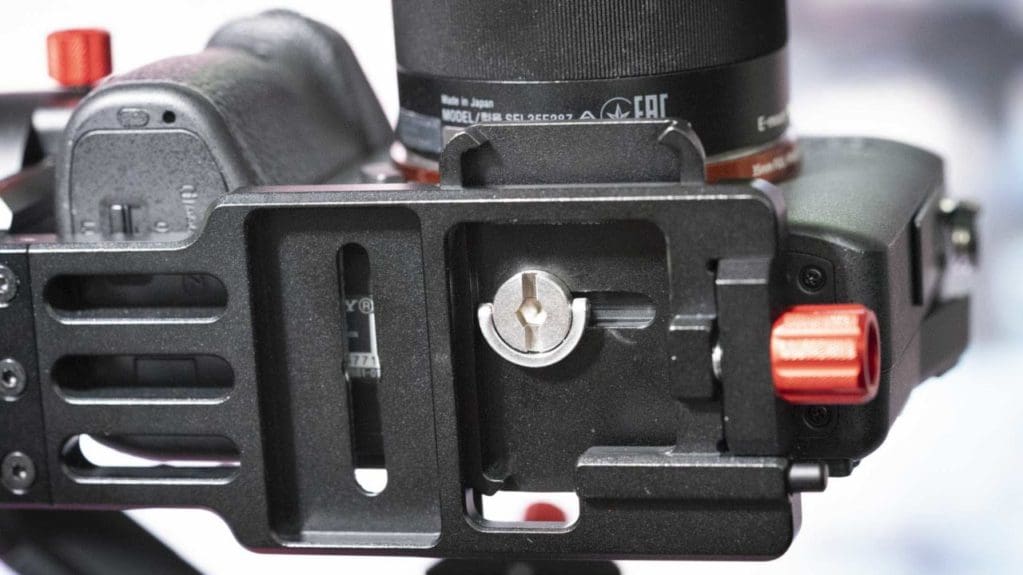
Now comes the fiddly bit. The first time you set-up the system you’re likely to need 20 minutes or so to get everything right. But once you’re more familiar with the set-up and the necessary adjustments it will take you much less time.
Making Adjustments
There are four adjustment points that can be used but it’s important to tackle each angle of movement in turn. The aim is to get the camera sitting level on the A1000 without the gimbal being powered-up.
Start by getting the camera correctly positioned on the release plate and mount to get the tilting angle right before moving on to the rolling axis. The last step is to adjust the panning axis.
It’s important to factor in how you will use the camera as just set it up. If you’re going to use a zoom lens, for example, zoom to the focal length you want to shoot at. Remember to fit the lens hood and any filters and flip the screen out if you’re going to be using it t compose shots.
If you don’t get the balance of the camera 100% correct, the A1000 can compensate. However, this means the motors will have to work harder so the batteries will drain quicker and the unit’s lifespan may be reduced.
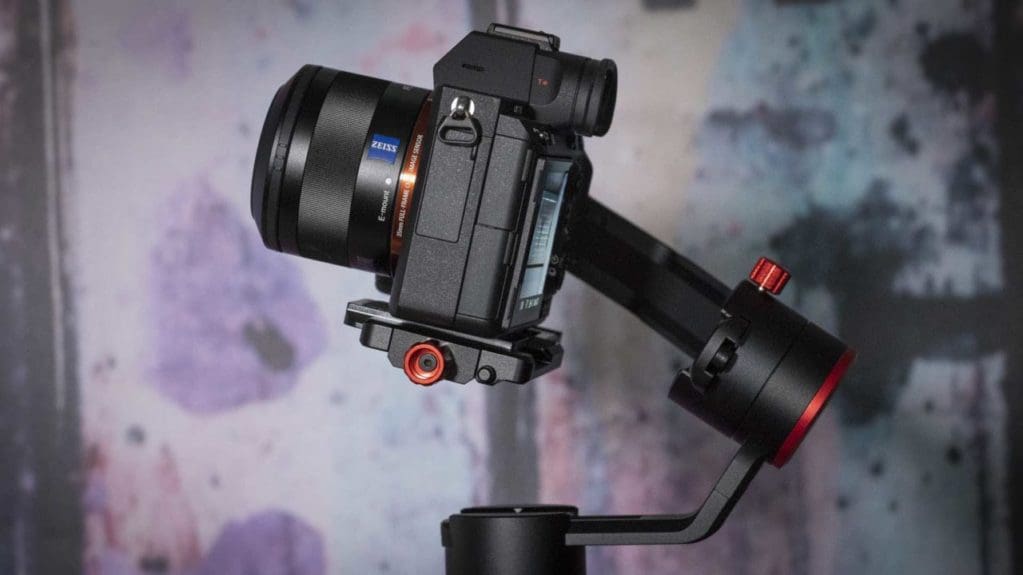
Key Specifications
[table id=76 /]
Build and Handling
The FeiyuTech A1000 is supplied in a neat case that houses all the parts. Of course, once you’ve set-up the gimbal to suit your camera and lens, it may not fit easily back in the case without changing the set-up.
Although the metal of the A1000 has a nice silky coating, overall it looks and feels like it has been produced by engineers. It’s solidly built, but the design lacks a little finesse.
The grip is also a bit too large to hold comfortably. I checked this with a couple of men with larger hands than mine and they were of the same opinion. We all found ourselves holding it two-handed on many occasions and it’s hard to avoid squeezing the trigger on the back of the grip.
Although there are some cables supplied to connect the A1000 to the camera, there isn’t cable for connecting the Sony A7 series.
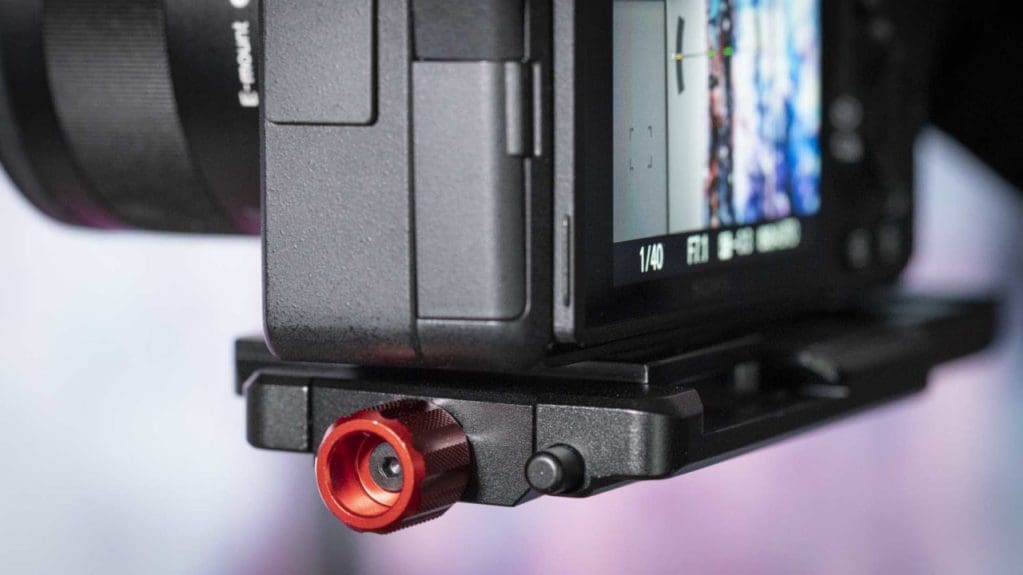
Camera Position
As I mentioned earlier, the set-up is pretty straightforward once you get your head around the adjustments that are required. However, I found it hard to tighten the release plate locking bolt sufficiently by hand. There’s an Allen bolt at the centre that holds the thumb screw on the main bolt. This means you can remove the thumbscrew and use a spanner on the bolt if necessary. However, it slows the process of getting the camera positioning right.
There were a few occasions when I had tightened the bolt as hard as I could by hand but the camera later slid forward or backwards.
When I used the FeiyuTech A1000 with the Sony A7 III and the Zeiss 24-70mm f/4, I was able to get it nicely balanced. When I swapped to use the Zeiss 35mm f/2.8 lens instead, the locking pin that helps secure the quick release plate got in the way. In the end, I had to settle for getting it close to balanced with the plate locked by the pin. I could get the balance perfect with a blog of Blu TacK on the lens hood, but I decided to let the motor take a little extra strain.
It also proved tricky getting the Panasonic Lumix G9 balanced. In fact, when the screen was flipped out to the side to give the best view it was impossible. However, once the A1000 was powered up it got the camera nice and level.
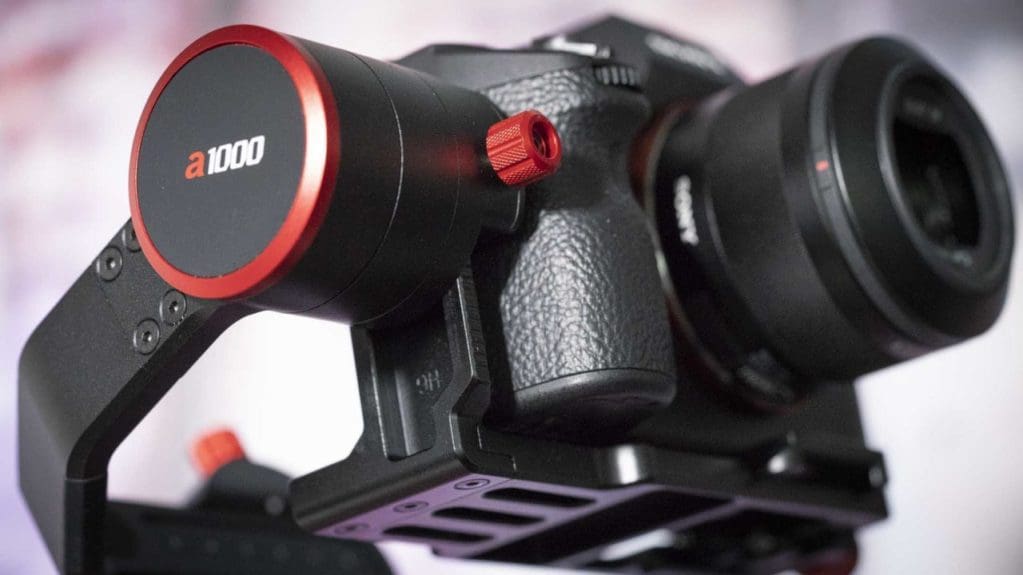
Performance
The FeiyuTech A1000 certainly removes a lot of the shake and wobble from your video. When you’re standing still, the results are very good indeed. The footage looks smooth and shake-free. Footage shot when you’re walking or running also so looks much improved. There’s still some movement visible with each pace, but it looks much better than when just holding the camera in your hands.
If you’re filming a motionless subject the movement is noticeable. If you’re following a moving subject with the camera, however, the results are more forgiving.
I’ve used the GoPro Karma Grip a lot and I don’t think that the A1000 does quite as good a job of smoothing out movement. To be fair though, the Karma Grip is correcting for movements made with a much smaller, lighter camera. It has a much easier job to do so it’s not really a fair comparison.

As the image above shows, the rolling axis motor can get in the way of the screen. You can get around this issue by tilting the screen upwards, or with a vari-angle screen, flipping it out to the side. However, it’s best to factor this in at the setting up stage.
App Control
FeiyuTech’s Feiyu ON app connected quickly to the A1000 during my testing. It also enabled me to make smooth panning and tilting shots controlled by the phone when the gimbal was on the mini tripod.
You can also use the app to make quite complex programmed pan and tilt movements. It took me a little while to realise that these movements take place immediately after you’ve programmed them and the camera has moved to its starting position. I was expecting to be able to create the program and then set it running when I was ready. It looks like it should be possible, but I couldn’t get it to happen.
There’s quite a depth of control provided by the app and it could prove extremely useful.
FeiyuTech A1000 Review Sample Video
The video below was shot from a car moving at 30mph along a country lane.
Verdict
Even with a comparatively small camera and lens combination like the Sony A7 III and Zeiss 35mm f/2.8 lens, the FeiyuTech A1000 is quite a heavy piece of kit to hold and use for a long period of time. I found I had to use it two-handed quite a bit and I would be inclined to invest in the double-handle accessory. This would enable a steadier hold, improving the final video.
The A1000 is very good value for money and it improves handheld video footage significantly. However, it doesn’t turn your DSLR or mirrorless camera into an action camera. You still need to try to keep it steady.
It’s going to be interesting to see how the FeiyuTech A1000 compares with the DJI Ronin-S which is set to retail for over twice the price.
